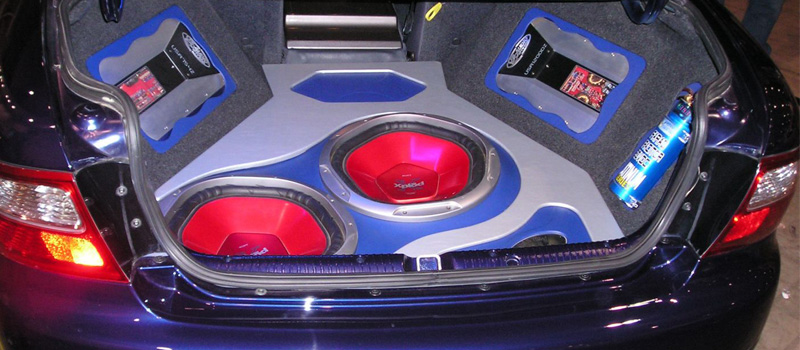Don’t Forget The Tools!
Say you just bought a brand new stereo and you want to give it the best shot at sounding great. You may notice your sonic immersion has improved, but wonder if changing out those stock speakers may just kick it up to 11. The good news is that after-market speakers will usually provide much better sound quality than most stock speakers. The kind-of-bad-news is you’ll need to make sure your stereo can handle the wattage – adding twelve tweeters and fifty subs could cause serious trouble. That being said, if you know to look for, you’re in good shape.
Start with some essential tools. The speaker process is a bit more involved than changing out a stereo – it requires being extra picky about wire management, voltages and ohms. You’re going to need the obvious: Philip’s head screwdriver, a flat-head screwdriver, electrical tape, wire caps, a wire cutter and some mounting tools. What may not be obvious is a drill (in some cases, you’ll need this), a potentiometer for testing your speakers, an Allen wrench and even a file. These are going to be essential for a successful car audio installation.
Finding The Right Speakers
First and foremost, collect the ohm and wattage ratings and any amount of channels on your stereo. Without this, you’re shooting blindly in the dark. If you have something supports 8 channels, each at 50 watts, you know you’re alloted 8 speakers rated for that specification (you can grab an amp as well to boost the volume, clarity and power of your setup). Anything more would be overkill and less would dull the sound depending on how the stereo distributes its power.
Preparations Before Installing
Have all your tools read to go during the car audio installation. You’ll end up wasting time if you miss out on something like a file at the last minute to grind down a some obstructing edges of the speaker mounts. Secondly (and this is important for speaker setup!), unplug your car’s battery. The last thing you want to do is kill the only source of power to car, especially if it’s your only method of transportation. Don’t forget to check your setup with a potentiometer.
Swapping Out
There are a few ways to do this part. You’ll notice most speakers are surrounded by a ring of plastic and a grill. Some of these are snapped on by plastic tabs hidden beneath the ring’s surface. Others are directly screwed into the car’s interior. If it’s the tabbed, snap-on version, a flat-head screwdriver and some patience will pry them off. If not, you can use the required tool to unscrew it from blocking the speaker (this can range from a Philip’s head to requiring an Allen wrench). Once that is done, repeat the same process for the speaker itself. More times than not, four screws hold it in place. After unscrewing it, depending on the model of your car, you will either be able to gently pull it out and unplug the speaker’s cables from the car’s wiring harness or, in some cases, have to detach the said harness. Most modern cars of the past several decades allow direct plug-in to the vehicle, however some may require soldering or crimping. Once your speaker is in, it’s time to finish up.

Finishing Touch
Reattach the speaker and its grill. This shouldn’t cause you too much trouble, but sometimes it does seem harder to get the plastic pieces back on than to remove them. If that’s the case, be persistent and patient; too much pressure and you’ll have an ugly hole exposing the speaker. Got the necessary parts back on? Reconnect the battery and give it a test. You should hear crystal clear sound and warm mids coming from the speakers. If it’s crackling or muted, carefully try the process again. Double check the manufacturer’s manual that came with both the stereo and the speakers to ensure everything is correct. Once you have them working, you’ll be ready to enjoy your favorite music on brand new after-market speakers.
